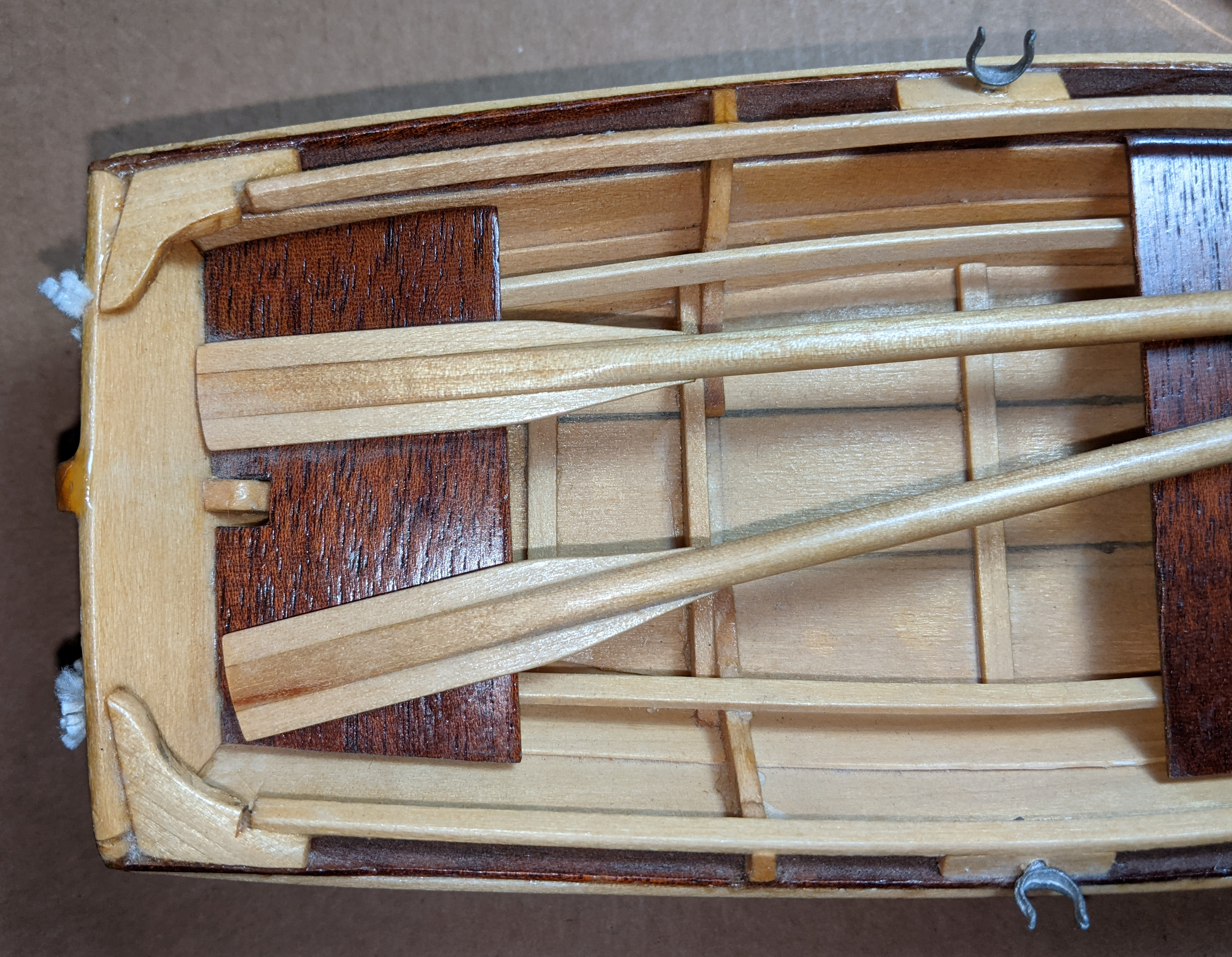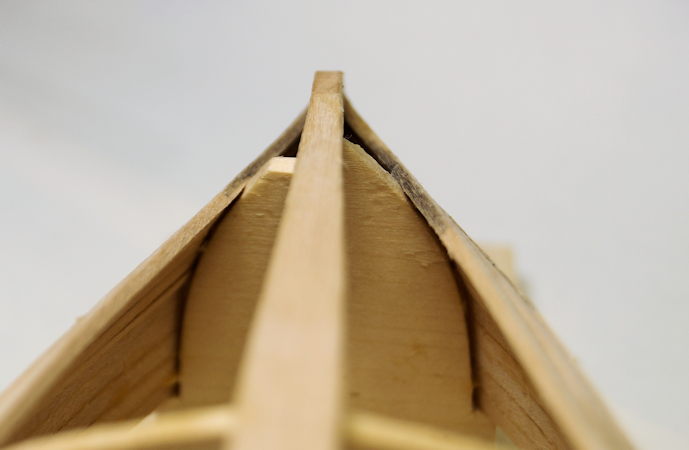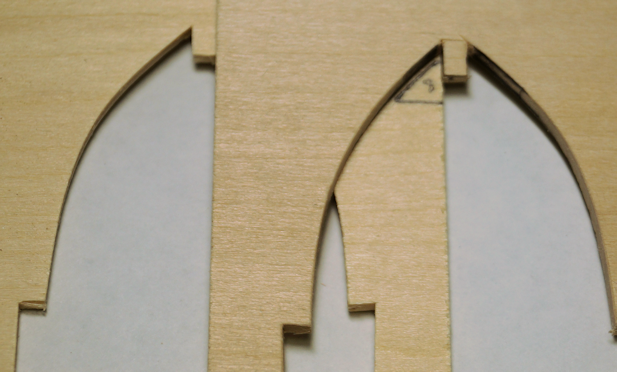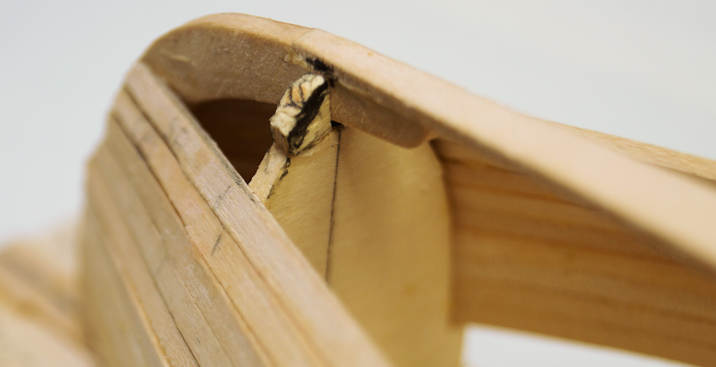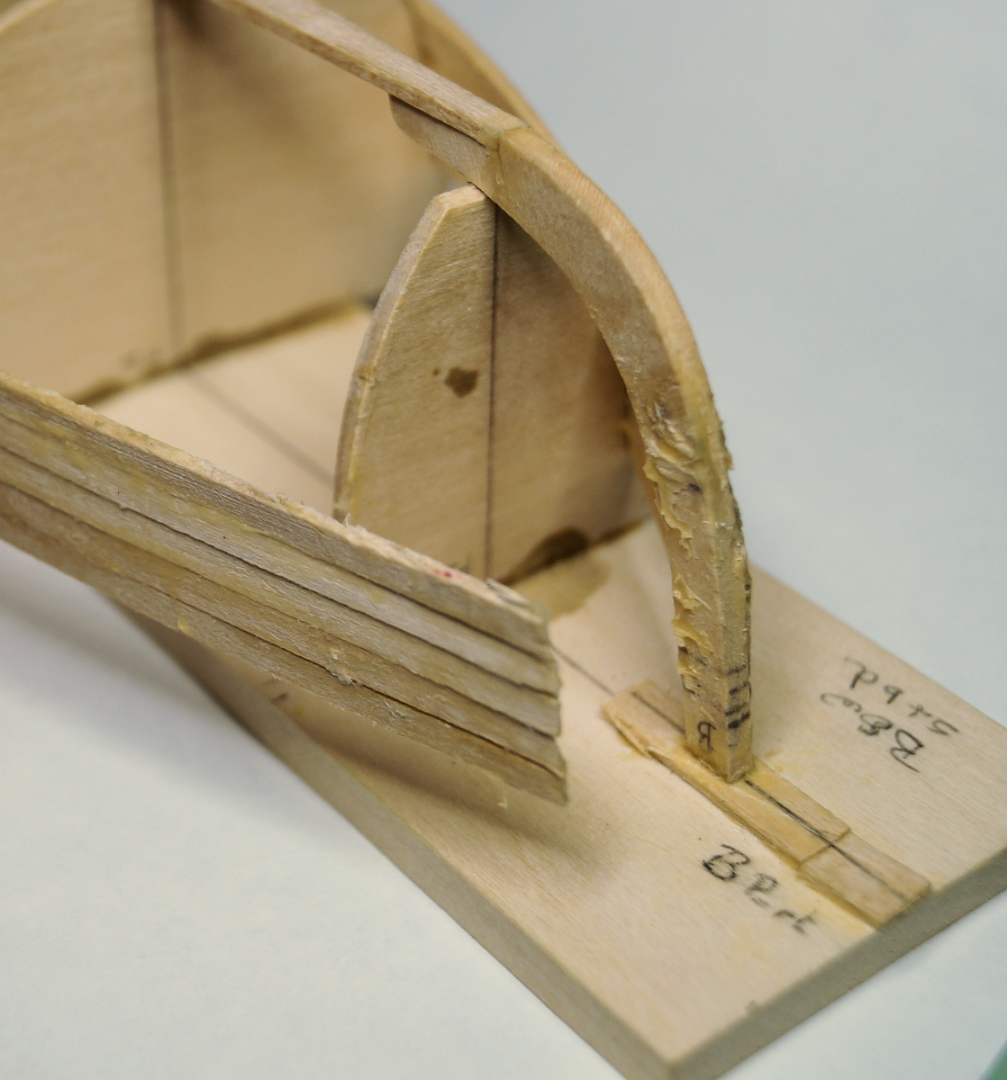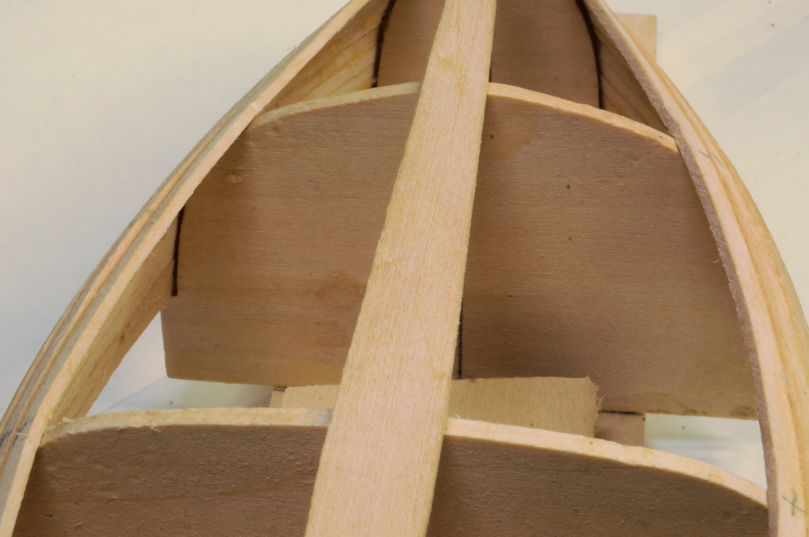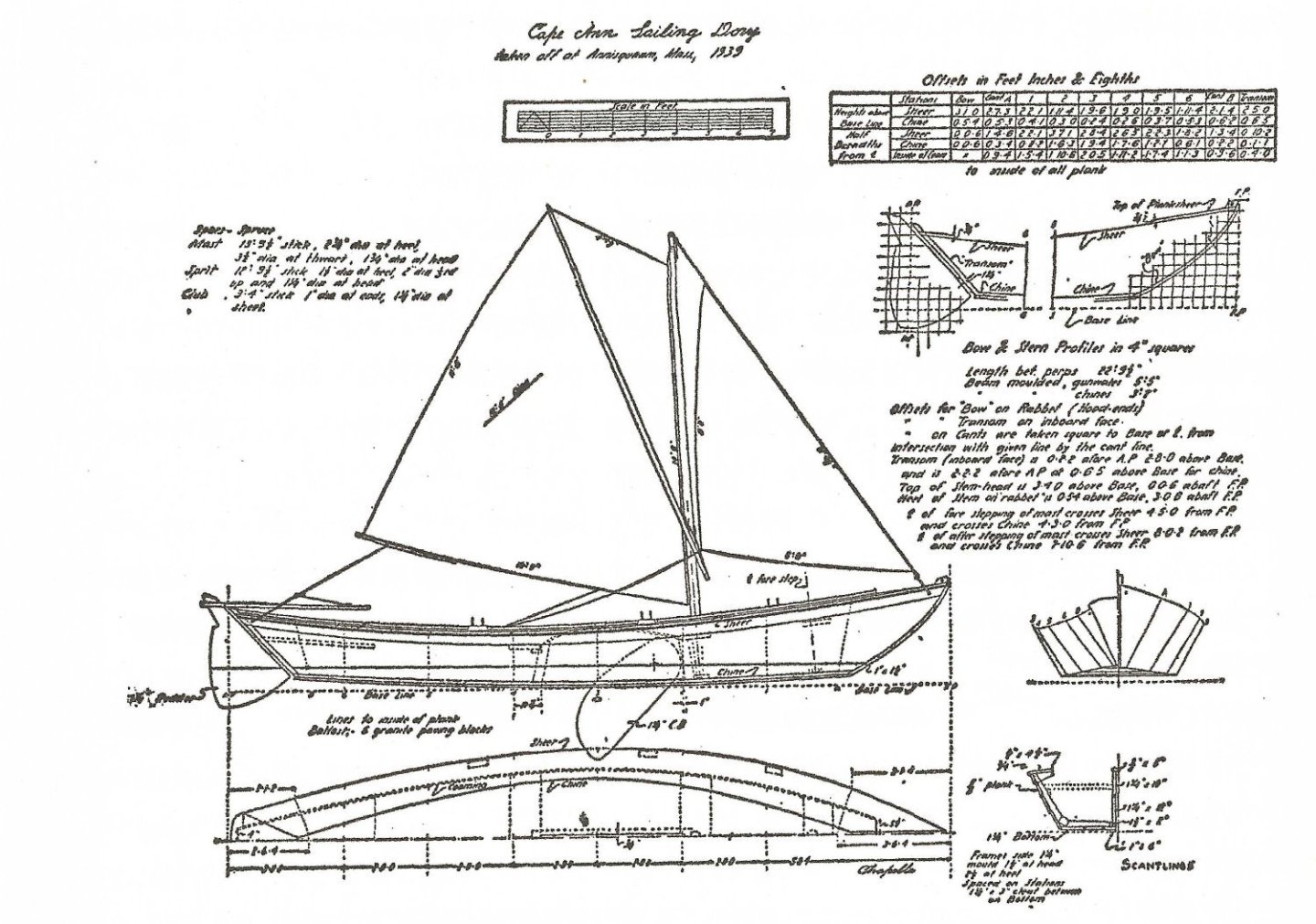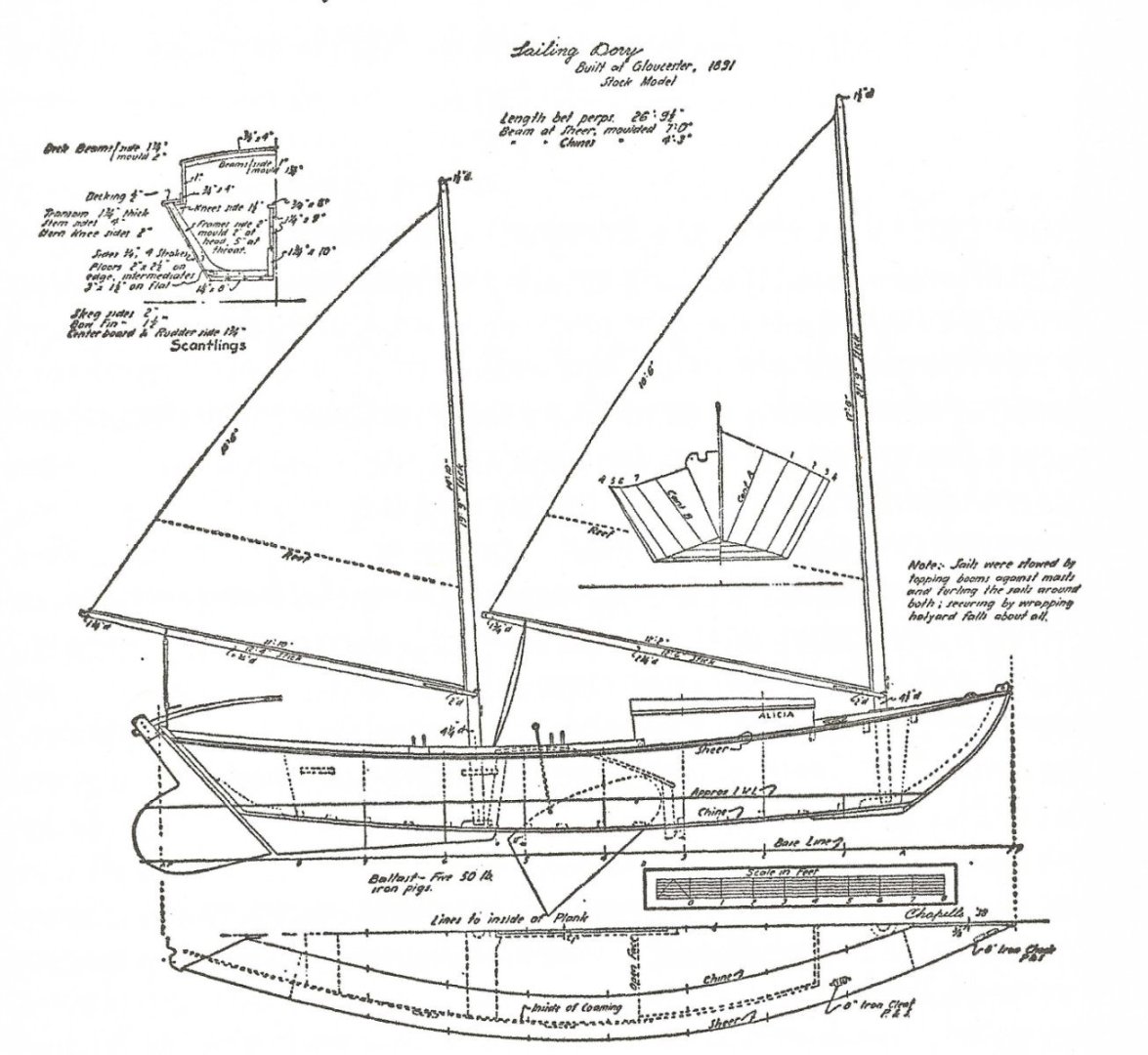-
Posts
907 -
Joined
-
Last visited
Content Type
Profiles
Forums
Gallery
Events
Everything posted by robert952
-
Challenges of model building - and my solutions. Part 2 (and Part 3) These two challenges are related to the bulkheads used for shaping the boat. Part 2: Broken center bulkhead The process for this build is to use the bulkheads and keel pieces as a strong back as described above. The bulkheads provide the necessary shape. Eventually, the boat will be removed from the form. Additionally, the instructions indicate when you remove the boat from the form, the sides may pull inward. The fix for this condition is to remove the center bulkhead from the baseboard and insert that bulkhead back into the boat. When ribs and seats get installed the shape will be held. (A couple of other builds on this specific model indicate this issue does occur.) The removal of the boat from the strong back means you need to be sure the planks don't end up glued to the bulkheads. To aid in this 'glue prevention' problem, I mentioned in a previous post the use of beeswax on the edges of the bulkheads. Also, after I glue a plank in place I flex the bulkheads to check they hadn't inadvertently stuck to the planks. Unfortunately, you run the risk of breaking the bulkheads off of the base board. Which I did...twice. The second time I broke the piece I had a difficult time fitting the piece in place and squaring the bulkhead with the baseboard. The sides of the model don't leave space for this type of work with planks installed. To (hopefully) prevent a third occurrence, I glued pieces of scrap wood on either side of the bulkhead. I took care to leave the smallest of gaps between the scrap wood on the bulkhead so that when I need to remove the bulkhead, I still can. I hope it works because if that bulkhead breaks again, I will not be able to reinstall it. On the good side, I have made the turn from the side to finish the 'bilge' of the boat. With only a few planks left, I shouldn't run into issues. <Keeping fingers crossed, which makes it difficult to assemble parts in place.> Part 3 Breaks on the end bulkheads. I knew this problem would have to be addressed at some point in the build. The end bulkheads at the stem posts came to a point. Early on in the build, those points broke off. Interestingly, the points broke off only on one side of the boat. The last couple of planks on each side need a support near the keel. As you can see in the above image, I am close to that point of the planking. The solution is not that bad. I took the original die-cut form and drew the small pieces I need (about 1/4" roughly triangular). I cut the pieces out and glued them in place with CA (so it would set up quicker than PVA). I shaded the area that I will remove to get the needed shape. It should be a relatively simple matter to sand this small bit of wood. The repaired bulkhead should give the necessary support for shaping the last few planks. After removing the excess wood, I should be able to finish the planking. As a related side bar: To make the strong back, the stems are glued to the baseboard. Having gained experience with using vinegar to loosen the glue, this aspect of loosening the stems should go fairly well.. I'll post images of the finished planking for my next post. Though I will not make any prediction of when that will be since I am not in a hurry.
- 44 replies
-
- maine peapod
- peapod
-
(and 4 more)
Tagged with:
-
Challenges of model building - and my solutions. Part 1 I decided to write this overdue post to outline a couple of problems I have solved. I didn't realize until I started this topic it has been since April since my last build log entry. However, in my defense I did have some problems with the build. And, of course, real life has uses different priorities just as enjoyable as model building. (OK, a debatable point. But, that's my story and I'm sticking to it.) But I digress. One day after having added a few planks to the hull, I noticed that the last plank didn't fit against the bulkhead tightly. On closer inspection, I found that the problem started with the previous three planks. The gap was getting wider with each additional plank While the matter was more prominent on one side, both sides of the boat had the issue. I either didn't bevel the planks enough or I didn't hold the planks in place tight enough while the glue was drying. Most likely a bit of both. The errant plank was nearly 1/8" out from the bulkhead. (See the first image in above post 6 to get an idea of what that might look like.) Challenge #1: Remove planks to correct a problem. How does one correct that? I determined the best fix would be remove the errant planks and redo them. I searched MSW, other modeling sites, and general wood working sites to find how to disassemble wood joints held with carpenter's glue (a.k.a. PVA). The three methods were apply fairly high heat to loosen the join, or use acetone or vinegar soften the glue and allow removal of the plank. Since the area I wanted to affect was fairly narrow. I didn't want to risk using high heat as it would likely warm up all planks. I am not a fan of acetone because of the smell. (I know, not bad, but still bothersome to me.) So, I went with the use of vinegar. I applied the vinegar with cotton swaps removing one plank at a time on each side of the model which reverses the assembly process. In a couple of cases I had to wait 15 to 30 minutes for the glue to soften the glue. However, vinegar did soften the glue and I could pry the planks apart. I started at one end of a plank and worked towards the center bulkhead. I then worked on the other end of the boat to center and repeated the process. The process went well until I got to the fourth plank. And then...Whoops! (OK, I used a few other stronger words at the time. 🤬 😭 ) Capillary action along the port bow stem soaked all the end joints. As I pried the plank I wanted to remove, all the planks came loose from the stem. BTW, for the photo, I did hold these out a bit to show the issue very clearly. On the good side I found out three things. 1. White vinegar, full strength, does soften carpenter's glue and with care you can loosen each plank as needed. 2. Though the vinegar softened the glue, it appears that after the vinegar dries/evaporates, adjacent joins do not seem to be effected. 3. With a bit of sanding to smooth the stem and plank end the above was corrected with little problems. The other lesson I learned was to be sure take a bit more care when beveling and fitting the planks. As with many challenges, you can improve your process. As you can see, I think I have solved the problem. So, on to the next challenge.
- 44 replies
-
- maine peapod
- peapod
-
(and 4 more)
Tagged with:
-
Looks like a neat little build. Looks great so far. I look forward to watching the progress. You may want to use the sail material provided. It's hard to tell from the photo with the box cover how the sail looks on the finished model. If the material is silk span (a tissue thin material), most techniques use layers to make the sails. Also, most sails are made from panels that can be simulated by overlapping the silkspan. At 1/10 scale, you can get by with thicker material that will look to scale. For me, I'd look at what the instructions show. As for 'schwertkasten' translation, I'd say it's a keel trunk or keel box, which probably doesn't translate well to German. The English term for item that goes into the box is "centerboard," though keel works well enough for descriptive purposes. Good luck on the build.
- 16 replies
-
- Optimist Dinghy
- optimist
-
(and 2 more)
Tagged with:
-
Glad to have provided a bit of inspiration. As update...RL has gotten in the way. As I mentioned a previously, I ran into an issue and had to remove some planks. However, I have corrected that problem plus one other that cropped up (or broke down - as the case may be). I am putting more effort into making time for the workbench.
- 44 replies
-
- maine peapod
- peapod
-
(and 4 more)
Tagged with:
-

Help with these clamps
robert952 replied to Some Idea's topic in Modeling tools and Workshop Equipment
Hmm, maybe even easier than that @Mic_Nao Looks like a countersunk head machine screw used. Solder a matching nut on the end of the screw in lieu of a handle. Brass bar stock instead of aluminum plate? -
Great build that can inspire others to expand their abilities and skill sets.
- 62 replies
-
- First Build
- Grand Banks Dory
-
(and 2 more)
Tagged with:
-
You are quite welcome. Glad to help. To your comment about stepping the mast when needed, there's a note on the two-masted sketch describing how to store the mast and sails. Necessity is indeed the Mother of Invention. I think Chappelle just collected the drawings and pulled them together for his books. He then commented on the "whys and wherefores." I like going through this book as it shows variations that were done to meet specific tasks or unique needs based on locale. As you point out, adding a sail seems a good way to get your feet wet on scratch build aspects. Hence, why I plan to add a keel, rudder and sail to a 'kit build.' A lot of these work boats included a sail to otherwise traditional row boats. As you found, there's photos which documents such changes.
- 62 replies
-
- First Build
- Grand Banks Dory
-
(and 2 more)
Tagged with:
-
Here are the scans. The print on the original page appears smudged. But you can use the scale on the page to get a decent approximation for the size of the sails. With one mast. NOTE: If you look at the position of the mast it appears to be in the second thwart. Likely because the jib covers the first thwart and attaches at the bow. So, it may be a genetic aberration? Evolution has a way of changing things and no single example is the exact way things were always done. You are as likely to have done it correctly as the any other model. And the two-mast version. Again, both of these examples have rudder and center board. If you down load these and they have gotten resized, PM me an email address and I will send them to you. I scanned them at 600 dpi to give as much detail as possible. Source for these are: American Small Sailing Craft by Howard, L. Chapelle copyright 1951 by WW Norton and Company. Pages 91 (top image) and 93. (bottom image).
- 62 replies
-
- First Build
- Grand Banks Dory
-
(and 2 more)
Tagged with:
-
Using sails to get and from the 'ole fishing hole' or for other purposes (i.e. lighthouse tender) seems a fairly common evolution for these work boats. Hence, my plans for my Peapod build is to add a sail (if I ever get the planking done). I am using Chapman's American Small Sailing as my source for that purpose. For dories Chapman states the sail was "usually a mast hole in the forward thwart that carried a loose footed spritsail. Sometimes a jib was set." Further he points out that "since the dory had neither keel nor centerboard, the sails were only effective running free and the use of a jib seems to have been an affection."(pg 89) But, he then discusses (on the next page) 'shore dories' with a centerboard. He includes two plans, one showing the sprit-mainsail and jib rig and another two-masted sailing rig both with centerboards and rudders. I can scan the plans and post if you would like. The drawings are dated 1939 for the sprit sail and 1831 using what looks more along the lines of a 'leg of mutton' (?) set up - I think.
- 62 replies
-
- First Build
- Grand Banks Dory
-
(and 2 more)
Tagged with:
-
Adding these details takes a kit to the next level. Good job.
- 62 replies
-
- First Build
- Grand Banks Dory
-
(and 2 more)
Tagged with:
-
Super build. I enjoyed following along. Thanks for the details of your experiences.
- 62 replies
-
- First Build
- Grand Banks Dory
-
(and 2 more)
Tagged with:
-
Greetings and welcome aboard. If it's the first model you have built, you may want to review this thread: https://modelshipworld.com/topic/13703-for-beginners-a-cautionary-tale/page/8/#comment-977787 The recommendation from above (short version) start small to build your skills. (Be honest with yourself to avoid frustration down the road.) As for tools it depends on the model and scale you plan to build. The list you have is a good start for basic tool kits. You could also review some starter tool kits like this one to see what you might want to consider. (Those kits may or may not have things you really need.) You may need smaller clips and maybe larger. Tape (painter's tape) proves useful to me for test fitting and holding things in place temporarily (as with test fitting, holding things as glue cures, and of course, to help with masking off areas during the painting process. I'd suggest some type of 90 degree square (machinist square). I'd suggest at least two to square up two faces and allow you to work on more than one frame/bulkhead. When building plank-on-bulkhead or plank-on-frames, getting the frames set properly is critical. Some models give you a building rig of some type. However, I have found it a good idea to be sure you check they are square. Look at Micromark and Model Expo for these while shopping. You can find different price points. Find what your budget can stand. Tweezers! Be sure to have a couple of different sizes with self-locking in the mix. There's some 'kits' that have a selection of tweezers that might be a good start until you figure out which type works best for you. As to glue/adhesives, again, a lot depends on your model, how things fit, how fast parts need to set, etc. Also, if you plan on using photoetched parts, plastic, and different materials ,may require different types of glue. I'll leave room for others to join in with their list. As you will likely find with this thread, you will get a lot of opinions and ideas. Good luck. Keep us posted with a build log when you start.
-
Looks good. Thanks for sharing the pic.
- 15 replies
-
- buy boat
- Wye River Models
-
(and 1 more)
Tagged with:
-
I was discussing modeling tools with a couple of NRG members the other day. We agreed that sometimes the tool we need doesn't exist and we improvise and create our own. I love the repurposed Exacto knife sheath and piece of scrap wood in use here. A good example of necessity being the Mother of Invention.
- 49 replies
-
- muscongus bay lobster smack
- Model Shipways
- (and 2 more)
-
It's in my stash. I think it good to follow along to see what I have in store for my (eventual) build.
- 47 replies
-
Interesting (and different) aspect of nautical history. Thanks for sharing the research. Great read.
-
Thanks for the detail in the log. I appreciate the time you take to write about how you have experimented with techniques.bThis info can prove to be a help to others building this model. Also, your experiences can be applied to similar work. I think every model can be a learning experience for the model builder and those of us following along.
- 62 replies
-
- First Build
- Grand Banks Dory
-
(and 2 more)
Tagged with:
-
@Mike Collier Thanks for stopping in. Ran into an issue that I have to correct. When I fix that I will get back on track. @Knocklouder Thanks for joining the ride.
- 44 replies
-
- maine peapod
- peapod
-
(and 4 more)
Tagged with:
-
I had read on the forum (somewhere, sometime) about using hair clamps as they aren't 'aggressive' to borrow the term. Bobby pins with scrap wood like you do seems a good solution too. Thanks for the images.
- 62 replies
-
- First Build
- Grand Banks Dory
-
(and 2 more)
Tagged with:
About us
Modelshipworld - Advancing Ship Modeling through Research
SSL Secured
Your security is important for us so this Website is SSL-Secured
NRG Mailing Address
Nautical Research Guild
237 South Lincoln Street
Westmont IL, 60559-1917
Model Ship World ® and the MSW logo are Registered Trademarks, and belong to the Nautical Research Guild (United States Patent and Trademark Office: No. 6,929,264 & No. 6,929,274, registered Dec. 20, 2022)
Helpful Links
About the NRG
If you enjoy building ship models that are historically accurate as well as beautiful, then The Nautical Research Guild (NRG) is just right for you.
The Guild is a non-profit educational organization whose mission is to “Advance Ship Modeling Through Research”. We provide support to our members in their efforts to raise the quality of their model ships.
The Nautical Research Guild has published our world-renowned quarterly magazine, The Nautical Research Journal, since 1955. The pages of the Journal are full of articles by accomplished ship modelers who show you how they create those exquisite details on their models, and by maritime historians who show you the correct details to build. The Journal is available in both print and digital editions. Go to the NRG web site (www.thenrg.org) to download a complimentary digital copy of the Journal. The NRG also publishes plan sets, books and compilations of back issues of the Journal and the former Ships in Scale and Model Ship Builder magazines.

